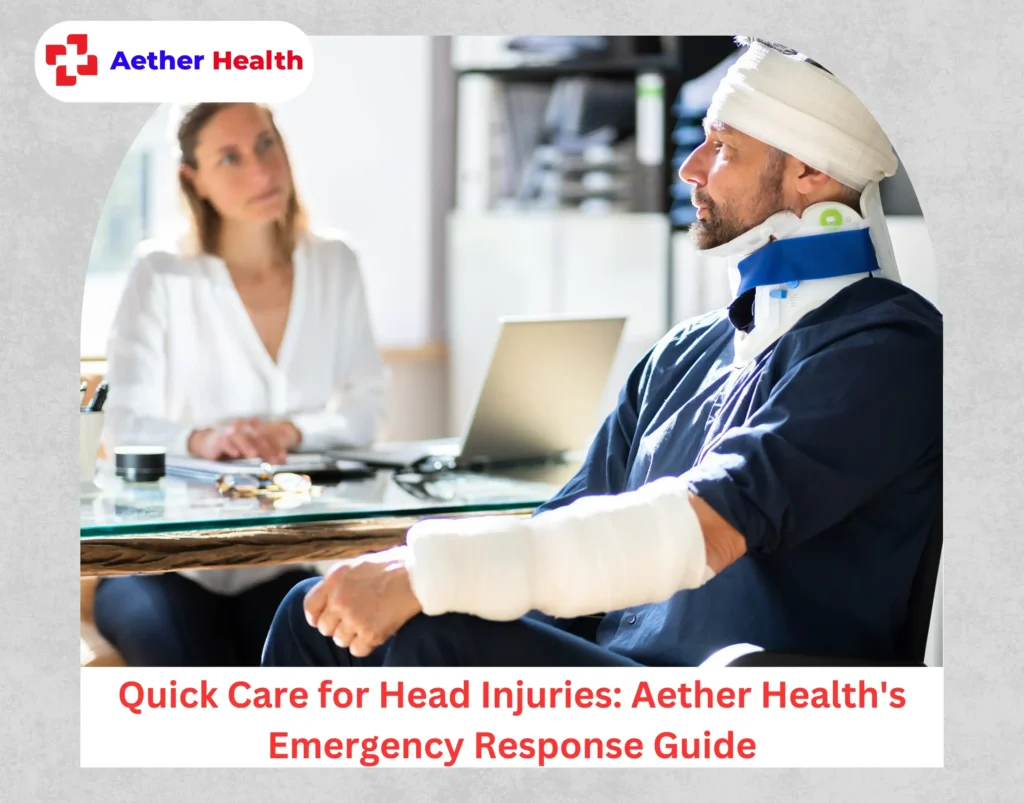Posture plays a crucial role in our well-being–its influence actually goes beyond physical alignment.
Some may not know that it can contribute to seemingly unrelated health conditions, such as chest pain, which can reveal interconnected influences on our holistic health.
Find out the relationship between your body’s posture condition and chest discomfort and know when to reach out to your medical specialist.
Understanding Bad Posture
The human body comprises different components. Your posture, even when it seems like a minor component, plays a significant role in your physical harmony.
Bad posture is characterized by misalignment and imbalance. In simpler words, it shows a lousy posture. You may get it for different reasons–whether it’s the result of sedentary habits, poor ergonomics, or muscular imbalances.
No matter what’s behind it, it is vital that you are aware how bad posture is crucial on our well-being.
What Causes Bad Posture?
Maintaining proper posture is influenced by various factors.
Here’s a glimpse into the contributors to your bad posture:
- Sedentary Lifestyle: Prolonged periods of sitting, common in desk jobs or with excessive screen time, can lead to weakened muscles and poor posture.
- Muscular Imbalances: Weak or tight muscles, often due to a lack of exercise or improper training, may contribute to your postural issues.
- Ergonomic Factors: Poorly designed workspaces and furniture can encourage slouching or awkward positions. Over time, you develop lousy posture which you may not be aware of.
Chest Pain: An Overview

Chest pain is a complex symptom that needs a comprehensive understanding of its implications.
Often a cause for immediate concern, chest pain can be attributed to a spectrum of underlying factors. It ranges from cardiac issues like angina to musculoskeletal sources such as strained muscles or rib injuries.
What Are The Common Causes That Lead To Chest Pain?
Knowing the origins of your chest pain is essential for accurate diagnosis and effective management.
Here are the common culprits behind this health condition:
- Cardiac Issues: Conditions like angina or myocardial infarction (heart attack) often manifest as chest pain, signaling potential heart-related concerns.
- Musculoskeletal Factors: Strained muscles, rib injuries, or inflammation in the chest wall can contribute to discomfort. These considerations highlight the link between the skeletal and muscular systems.
- Gastrointestinal Distress: Digestive issues such as acid reflux or inflammation in the esophagus may also present as chest pain.
Connection Between Chest Pain and Bad Posture
Not many know that our posture can influence various physiological aspects. Poor posture may contribute to chest discomfort through several mechanisms.
When the spine is not properly aligned, it can affect the surrounding muscles and organs, potentially leading to tension and pain in the chest region. Additionally, compromised posture may impact respiratory function, exacerbating issues contributing to chest pain.
Recognizing and addressing the connection between bad posture and chest discomfort is essential for comprehensive health management. Talk to your health specialist for a proper treatment plan for this condition.
Common Symptoms Associated with Bad Posture
Maintaining optimal posture is not only essential for physical appearance. It is also for overall well-being. Poor posture can manifest in various symptoms, affecting our health.
Here are some signs of issues with your body’s posture.
Muscular Tension and Discomfort

Muscular tension and discomfort are expected consequences of bad posture, often affecting various muscle groups. Prolonged periods of poor alignment can lead to overworked and strained muscles, resulting in a persistent sense of tension and discomfort.
Nerve Compression and Radiating Pain
Bad posture can contribute to nerve compression. It radiates pain beyond the immediate area of concern. When nerves are compressed or impinged due to poor posture, individuals may experience tingling, numbness, or shooting pain. You can explore posture-focused exercises and ergonomic adjustments to alleviate the pain associated with it.
Psychological Effects of Bad Posture on Pain Perception
The psychological effects of bad posture on pain perception underscore its potential effect on the mind and body.
Poor posture can influence how individuals perceive and experience pain, potentially amplifying discomfort. Factors such as reduced lung capacity and compromised breathing due to slouched postures can contribute to stress and anxiety, further intensifying the perception of pain.
Causes of Chest Pain from Poor Posture

Poor posture can contribute to various syndromes and issues that manifest as chest pain. Below are the common contributors to chest pain from slouching.
Upper-Crossed Syndrome
Upper-crossed syndrome is a prevalent consequence of poor posture due to the imbalances in the upper body’s muscles. Specifically, it involves tightness in the chest muscles and upper trapezius, coupled with weakness in the muscles between the shoulder blades and neck.
This imbalance pulls the shoulders forward, affecting the spine’s condition and contributing to chest pain.
Respiratory Issues
Slouched or hunched postures can restrict lung expansion, affecting the efficiency of breathing and potentially causing discomfort in the chest region.
Precordial Catch Syndrome
Precordial Catch Syndrome is a unique condition characterized by sudden, sharp chest pains that certain postural habits can trigger. While the exact cause is not fully understood, some individuals report experiencing these pains after sudden movements or changes in posture.
How Do Healthcare Professionals Diagnose And Address Posture-Related Chest Pain Issues?
Diagnosing and addressing chest pain related to poor posture necessitates the expertise of healthcare professionals who can provide comprehensive assessments and tailored interventions.
Find out below healthcare professionals’ methodologies to diagnose and effectively address posture-related chest pain.
- Thorough Physical Examination: Healthcare professionals conduct detailed physical examinations, assessing posture, muscle imbalances, and potential structural issues contributing to chest pain. They identify postural abnormalities and associated musculoskeletal issues through palpation and range of motion tests.
- Diagnostic Imaging: In some cases, healthcare professionals may utilize diagnostic imaging such as X-rays or MRI scans to obtain a clearer picture of the musculoskeletal structure. These images help identify any underlying structural abnormalities contributing to posture-related chest pain.
- Collaborative Treatment Plans: Healthcare professionals collaborate on personalized treatment plans once diagnosed. These may include physical therapy, corrective exercises, and ergonomic recommendations.
How To Fix Chest Pain From Bad Posture
Addressing chest pain resulting from poor posture requires a proactive approach that combines awareness, corrective exercises, and targeted stretches.
Corrective Exercises and Stretching

Corrective exercises and stretching are fundamental to addressing and preventing posture-related issues. These targeted movements improve flexibility, enhance muscle balance, and promote proper alignment.
You can incorporate a routine of corrective exercises and stretching to counteract the adverse effects of poor posture effectively. This practice helps individuals regain postural integrity and alleviate associated discomfort.
Chest Stretches
Specific chest stretches are pivotal in relieving tightness and tension associated with poor posture. These stretches target the chest muscles, promoting flexibility and openness in the thoracic region.
This routine can aid in restoring balance to the upper body, mitigating the adverse effects of slumped or rounded shoulders. It also reduces the likelihood of posture-related chest pain.
Upper Back Exercises
Strengthening the muscles in the upper back is crucial for combating the forward pull caused by poor posture. Targeted upper back exercises help build strength and stability, promoting a more upright and aligned posture.
By focusing on the muscles between the shoulder blades and along the spine, you can counterbalance the effects of chest pain from slouching. Moreover, you can reduce the strain on the chest, contributing to the alleviation of posture-related chest pain.
Core Strengthening
Core-strengthening exercises target the muscles in the abdomen, lower back, and pelvis, providing stability to the spine.
Enhancing core strength can create a solid foundation for improved posture. You also reduce the risk of chest discomfort and foster overall musculoskeletal health.
When to Consult a Healthcare Professional
While minor discomfort may be common, certain signs warrant professional evaluation. These situations are warning signs that you need to consult a healthcare professional for a comprehensive assessment:
- Persistent or Increasing Pain: If chest pain or discomfort persists or intensifies despite attempts at self-care and postural improvements.
- Numbness, Tingling, or Radiating Pain: Sensations like numbness, tingling, or pain radiating down the arms or into other body areas may suggest nerve compression or other serious concerns.
- Difficulty Breathing or Chest Tightness: Any difficulty breathing or a persistent feeling of tightness in the chest should not be ignored.
- Postural Changes with Existing Health Conditions: Individuals with pre-existing health conditions, such as cardiovascular issues or respiratory disorders, should consult a healthcare professional if they notice changes in their posture accompanied by chest discomfort.
Knowing when to reach out to a healthcare professional empowers individuals to address posture-related chest pain promptly and comprehensively. Remember, medical experts can answer your most pressing questions, such as whether bad posture causes chest tightness or give medication for chest pain when sitting down, among others.
Taking Charge of Posture-Related Chest Pain
Understanding poor posture and chest pain is essential for proactive health management.
However, seeking professional guidance becomes paramount when faced with persistent or concerning symptoms.
Aether Health is a leading emergency facility that addresses chest pain from poor posture and related concerns. With state-of-the-art locations in Kingwood and Pearland, Texas, our experienced healthcare professionals specialize in comprehensive evaluations. We specialize in prompt interventions, with test results out in less than an hour for COVID, flu, and other viral infections.
Aether Health is here to provide swift and expert care if you or a loved one experiences persistent chest pain or other related symptoms.
Your health matters at Aether Health, and we’re here to help you every step of the way. Schedule a visit or contact us today to check in online!



